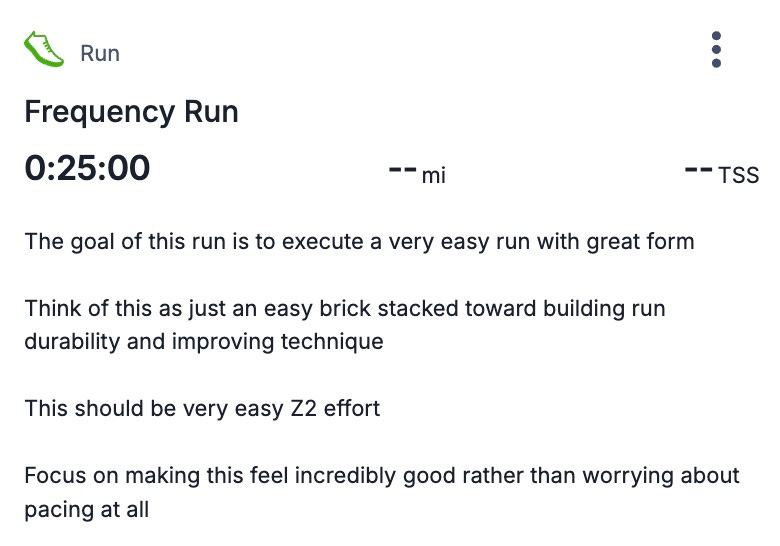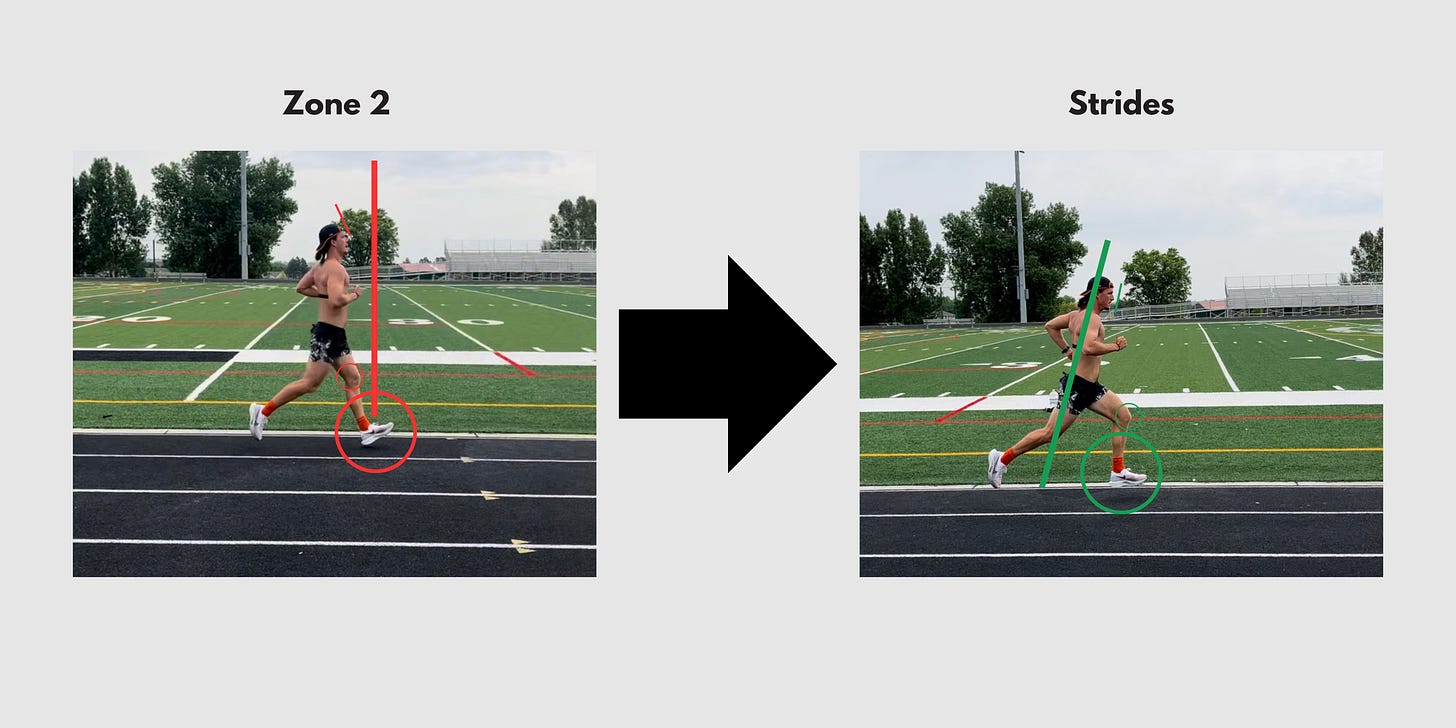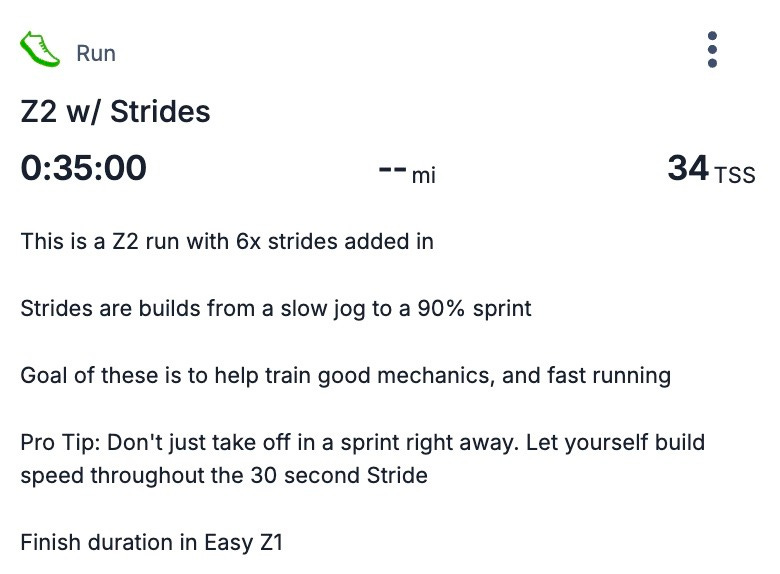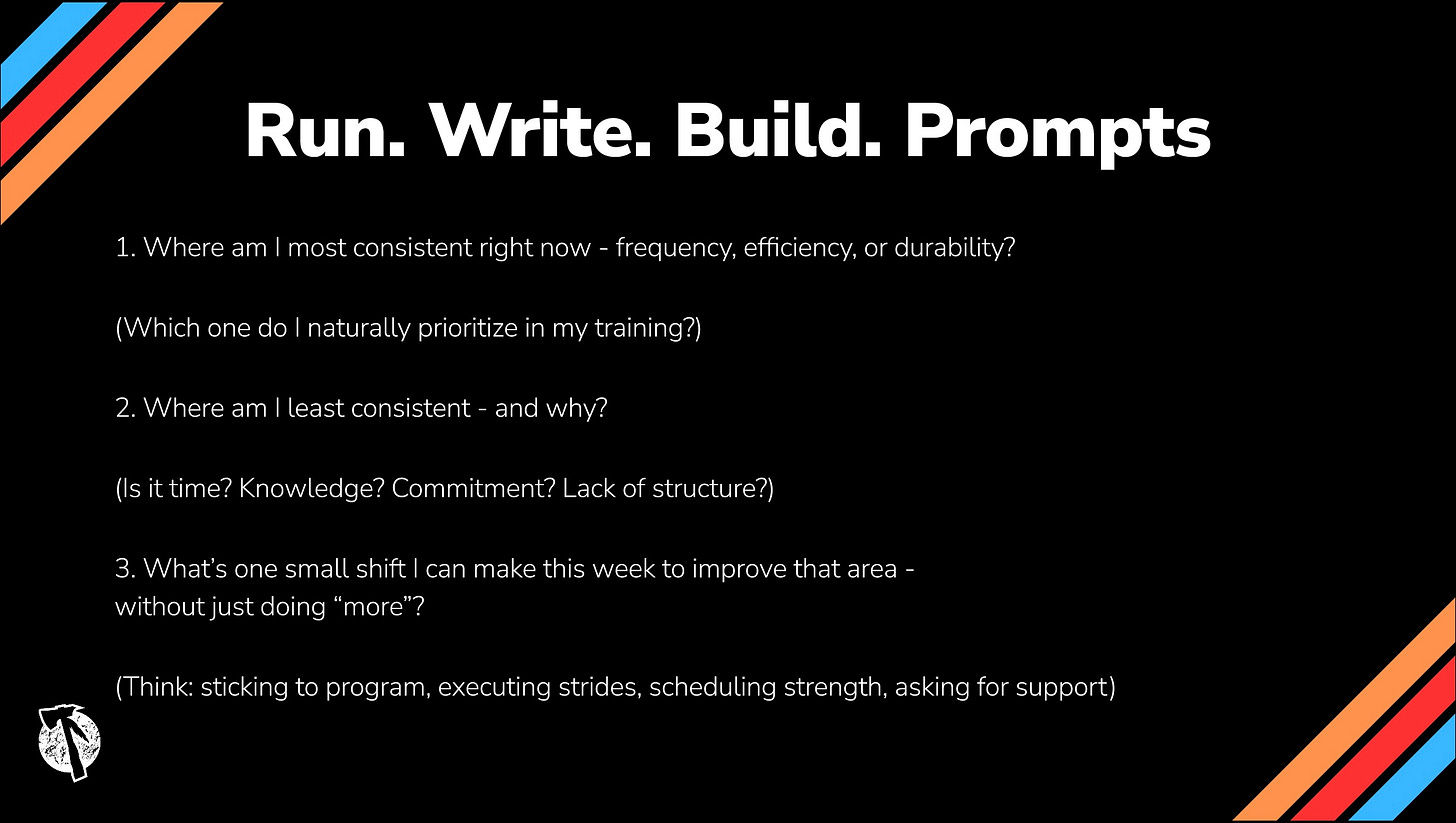Earlier this summer, I started programming for our next big Tribal Team Race:
Prairie on Fire Backyard Ultra
It’s a brutal format: one 4.1-mile loop every hour, on the hour, until you can’t continue.
I mapped out the first block of training for our athletes, which included:
long runs
speed work
double run days
run/walk time-on-feet sessions
The kind of volume you’d expect for something this demanding.
But after the first week, I observed something was off…
Lots of key workouts were skipped.
A few of the guys in the Prairie group are athletes 18–24 months into their endurance journey.
These guys aren’t beginners.
They’ve completed multiple race builds and crossed finish lines.
Many of them just did Chattanooga 70.3 in May.
And they were reaching an important level of endurance development:
proven ability to do big things
year round consistency is still main goal
desire to evolve out of every race prep being high pressure
Observe and Pivot
With Prairie being a second “Big Race” of the year, many athletes felt overwhelmed staring down another 3 month stretch of…
Long hours every weekend
Rearranging life around training
Navigating burnout and guilt when something didn’t get done
That’s when I pivoted.
I kept the key sessions…
But for many athletes, I cut the long stuff in half.
Ex:
Instead of 4-hour long runs, we capped it at 2
Instead of two separate 3-hour sessions on a Saturday (AM and PM), we did one focused run
And more importantly, I brought the focus back to the foundations of quality run development:
Run frequently
Move more efficiently
Train form that endures fatigue
Because at a certain point, better race performance doesn’t come from bigger builds.
It comes from doing the basics better.
Let me show you what that looks like in practice.
1. Frequency > Duration
Too many runners think improvement comes from stacking long runs.
But what actually moves the needle is how often you run, not just how far.
3x 30 minute runs a week will do more for you than one big 90 minute effort.
Especially if that big effort breaks your body down and kills your confidence.
Other frequency benefits:
Reinforced form through repetition
Build identity (“I show up often” vs. “I’m all or nothing”)
Smooth out the logistics: gear prep, hydration, nutrition
BONUS: consistent runners create trust in their ability to show up for themselves
And that’s what holds up when life comes down on guys with big goals and dreams, across sport and life.
Try this:
Add one extra “Frequency Run” this week (h/t
).2. Speed Improves Form
Speed isn’t just about building fitness…
It’s also about training good form.
When you run fast (strides, hill repeats, intervals) you force your body to move more efficiently.
You lift your posture. You engage your glutes. You stop overstriding.
We saw this firsthand with Big Mike at Training Camp last year.
His Zone 2 stride was:
upright, head back
foot landing way out in front
no knee drive or extension from the hips
But when we had him do a few Strides? The difference was instant:
Forward lean
Strong knee drive and hip extension
Foot landing sooner (and under his center of mass)
He looked like a different athlete.
And so we began intentionally bringing the mechanics that show up in Strides to his Z2 runs.
The one key tip that helped Big Mike:
Plant your foot faster.
Don’t just let it swing out and land without intention.
Plant it forcefully, while your knee is bent, and feel your posterior chain control your pace and power.
Try this:
Zone 2 run with Strides
Focus on clean, powerful form, and planting your foot early.
3. Durability = Form Under Fatigue
Durability doesn’t mean suffer longer.
It means hold your form when your body starts breaking down.
And that starts with training your posterior chain:
glutes
hamstrings
calves
If these muscles aren’t firing together (or trained for endurance demands) your quads, knees, and hips will pick up the slack.
Do you ever experience…
Knee pain
Quad cramps
IT band flare-ups
Chronic low back problems
???
That’s a sign your posterior chain needs work.
How To Recruit Your Posterior Chain
Blend intentional strength training with controlled form in runs.
Need help with endurance strength training? I have a program for you.
We call them Tribal 25s.
They’re highly effective, 25-minute lifts designed to improve strength, coordination, and muscle recruitment - without destroying you for the next day’s training session.
Try them out here:
Access Tribal 25s Strength Programs HERE.
The Bottom Line
Endurance athletes love to suffer. And sometimes, that’s the point.
But that’s not usually the most effective path to progress.
You can’t build a successful life swinging in and out of race preps that overwhelm you.
And you can’t treat every race as the most important thing in your life.
Sometimes, the best thing you can do for your running is to zoom out.
Simplify.
Rebuild your foundation.
And improve the skills that make you fall in love with the process of getting better.
Run more often
Move more efficiently
Stay strong when it matters most
That’s the path to real endurance.
Not just as a runner.
But as an athlete who can stay in the game for the long haul.
Onward.
— Ryan
BONUS:
These ideas were presented on Call #1 of the Run Foundations Cohort.
After teaching on these ideas, I prompted athletes with these 3x Run. Write. Build. Prompts.
Enjoy.






Great post! The link to your strength workouts is currently broken.